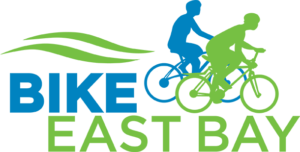Jack Weir
Terri Williamson
Michael Flake
Suzanne Angeli
Michael Harris
Jack Weir
Thank you for the opportunity to share my views of public transportation in the East Bay.
Jack Weir
Terri Williamson
Michael Flake
Suzanne Angeli
Michael Harris
Jack Weir
Thank you for the opportunity to share my views of public transportation in the East Bay.
My campaign is focused on Pleasant Hill specific issues, and in all honesty my priorities are fiscal solvency and public participation in the democratic process. The geographic and demographic differences between Pleasant Hill and Berkeley and other urban areas are significant.
I am life-long cyclist, having scaled the summit of Mt. Diablo many times with my brothers. and other riders. I have racked up many hundreds of pleasant miles traveling many roads in the Northern California region. I share a keen appreciation of the benefits of cycling.
Terri Williamson
[no response]
1. Do you use a bicycle for transportation? If so, for what purposes (commuting, recreation, errands) and how often? Please indicate how you most commonly commute to work. (300 words or less)
Yes, recreation approximately two days a month. I currently drive a motor vehicle to work due to the nature of my job; however, my career in the past has been accomodating to the use of a bicycle for comuting. I worked in Sacramento for 4 years and rode Amtrack most everyday. During good weather on a Friday, I used my bicycle within my commute when the demands of my schedule would allow.
I also lived in Davis, California while attending UC Davis, so the bicycle was my primary means of tranporation during that period of my life.
2. Do you feel your city is a bicycle-friendly city? Please explain (300 words or less)
Pleasant Hill has some admirable components to its transportation network that is conducive to bicycle use; however, the City could go much further and learn the same lessons I took away from my time living in Davis, California.
I graduated from UC Davis with a degree in civil engineering. During my time at Davis, my bicycle was my primary means of transporation and I gained an appreciation of how a community can significantly integrate bicycles into its transportation network and plan. At Davis, everyone is respectful of having bicyclists share the traveled way with motor vehicles. Outreach to new students stressed safety and how the vehicle code applies to bicyclists.
Government can do much more to improve integration of the human powered vehicle into our transportation network. Government can achieve this improvement throughout society by stressing: 1) education and outreach; 2) resources for capital improvements, such as bicycle paths; and 3) planning and design policies and procedures that account for bicycle uses during the formulation of projects and improvements by transportation entities, cities and counties.
All persons obtaining a drivers licensce should know the rights of bicyclists and rules for using a bicycle, even if a person doesn’t use a bike. Drivers need to understand the rights of bicyclists and that this is just another vehicle on the roadway, so that they are mindful of bicyclists and respect their access to roads.
Our City and the Contra Costa Transportation Authority need to devote resources for capital improvements that enhance bicycle safety and access. I’ve planned and designed bike paths and roadways to account for bicycle use based on the Caltrans Highway Design Manual. Our city planners and engineers need to put themselves into the perspective of the bicyclist to understand their needs and access to transportation infrastructure.
3. AB 32, California’s landmark Global Warming Solutions Act, was enacted in 2006 and calls for a reduction in Greenhouse Gases (GHG) to 1990 levels by the year 2020–a 25% reduction from 2005 levels. In addition, the Air Resources Board currently is selecting GHG reduction targets for the Bay Area. What will you do as a City Councilmember to reduce the City’s transportation-related GHG’s? (300 words or less)
A comprehensive energy audit of the City is needed to explore where energy efficiencies can be obtained through conservation and the use of technologies that can provide a return that eventually pay for their costs within a 10-20 year period. The audit would include examination of the vehicle fleets and how fleet vehciles could be gradually replaced with vehicles that are more energy efficient and use more domestic sources of energy. I’m a proponent of CNG and CNG-hybrid vehicles, as a bridge fuel to getting us off foriegn oil and allowing greater advances in vehicles, especially human powered and plug-in electrics sourced from a clean energy source.
4. When making streets safe for bicycling, as called for in the Bicycle Plan, there are often conflicts between the needs for more parking, sufficient traffic flow, bus service, and safe bike access. This particularly happens on busy arterials where buses run and where there are many businesses that want sufficient parking for their customers. Yet, bicyclists need to patronize these businesses as well use the streets to get to and from work. These streets are often the most direct routes and the safest for cyclists to use at night, which is why they are included in the City’s Bicycle Plan. Knowing that in many cases, streets will likely have to be reconfigured to accommodate bicyclists, reducing the number of conventional car lanes and/or converting space for on-street parking to make room for bicycle right-of-way, what ideas do you have to make our busy arterial streets safe for bicycling? (300 words or less);
I would examine if traffic lanes can be narrowed to allow for a bicycle lane. Standard lane widths are 12ft, thus narrowing these to 10 feet through re-striping could provide significant space to enhance the shoulder to allow for a bicycle lane. Enhancing visibility for night use is critical too, so placing higly reflective striping and reflectors to delineate bike lanes is needed. Education, outreach and enforcement of lights on bicycles could improve safety too, as all too often I encounter bicyclist that do not know that a head light and red rear reflector or light is needed.
5. A world-wide trend to enhance the quality of city life and support economic development has led countless cities to create car-free space on city streets, providing opportunities for people to bike, walk and play safely in their neighborhoods. They have proven to be extremely popular around the East Bay. As Councilmember, will you commit to expanding pedestrian zones and to significantly increase funding for more car-free spaces in town? Yes
6. At the current rate of implementation, the Bicycle Plan will take many years to implement. A current challenge is limited staff time to devote to bicycle plan implementation. Will you commit to increasing staffing and resources directed toward implementation of the Bicycle Plan? Yes
7. A major safety and circulation problem is created by one-way streets, which are generally designed to move more traffic and have a negative effect of making the street a less desirable place to live and work. In an effort to improve the livability and economic vitality our City, do you support returning one-way streets back to two-way travel? No
8. For generations, state, regional and even local policies have prioritized traffic flow and space for private motor vehicles, to the detriment of walking, bicycling and transit. Around the world, many cities are reversing this priority and using the following heirarchy in transportation planning; pedestrians first, then bicyclists, transit vehicles, and lastly private motor vehicles. If elected, will you support this priority hierarchy in the City? No
9. Research has shown that 20 mph is the upper limit at which motorists can safely perceive and react to pedestrians and bicyclists. In fact, according to the Federal Highway Administration, a pedestrian is 8 times more likely to be killed in a collision with a car going 30 mph than with a car going 20 mph. Many cities have established maximum speeds of 20 mph for this very reason. If elected, would you support taking measures to ensure maximum speeds on city streets of 20mph? No
10. Please respond to the following short questions:
a. Do you support establishing a bike parking zoning ordinance for new residential and commercial development? Yes
b. Do you support establishing a goal of cutting bicycle crash rates in half over the next four years? Yes
c. Do you support increasing local funding for bicycle projects? Yes
d. Do you support doubling the bicycle mode share in the City in the next four years? Yes
e. Do you support establishing an effective pedestrian safety campaign in the City? Yes
f. Do you support expanding the traffic calming program to limit thru traffic in residential neighborhoods? Yes
g. Alameda County has started work on Sustainable Communities Strategies as part of SB 375, which requires the state of California to reduce vehicle miles traveled (VMT). Do you support the goal of reducing the number of vehicle miles traveled?
12. What other ideas do you have to increase the number of people bicycling in town? (300 words or less); I would be a proponent of the following:
1. Projects that eliminate gaps between defined bike paths, especially on regional routes, such as between Alameda and Contra Costa Counties.
2. Promote projects that develop pathways that connect to regional facilities, such as the pathways on newly constructed Carquinez, Benicia-Martinez, and forthcoming San Francisco-Bay Bridges.
3. Traffic calming along prevailing bicycle routes to schools.
4. Bicycle safety and maintenance workshops at the farmer’s market and other venues within the City.
5. Improve the City website to illustrate bicycle routes within a comprehensive City and Regional map that can be downloaded or printed. The site would also define upcoming projects and schedules for bicycle related access and route improvements. Also, the site would define safety requirements and provide users access to other information sources for bicycle safety and maintenance.
6. I would be a proponent of signage to identify bicycle related infrastructure and alert drivers to the presence of bicycles, such as flashing lights within roadway refelctors and delineation striping on bike paths that cross a major vehicle route, such as the canal trail crossing of Gregory Lane, just east of Pleasant Hill
Suzanne Angeli
[no response]
Michael Harris
[no response]


